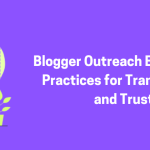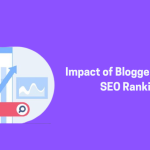Table Of Content
Link building is the bedrock strategy for ranking higher and increasing website authority in search engine result pages (SERPs). However, it can be tricky to track all the different approaches to link building.
On the one hand, there is white hat SEO, which emphasizes the acquisition of organic links and prioritizes ethical practices.
On the other hand, black hat SEO uses manipulative strategies that can penalize your site.
But what about the middle grey area in between? This is where grey hat link building comes in. This blog post will traverse the grey areas in SEO and analyze the best and worst practices.
Table Of Contents
‣ What is Grey Hat Link Building in SEO?
‣ Why is Grey Hat Link Building Important?
‣ Best Practices of Grey Hat Link Building to Boost Your SEO
‣ Final Thoughts
What Is Gray Hat Link Building In SEO?

Grey hat link building is the strategy that falls in the middle between the ethical practices of white hat and the extreme techniques of black hat SEO.
It includes a blend of SEO methods aligned with Google Webmaster Guidelines (white hat) and those that breach them (black hat).
For instance, creating quality content is considered a white hat, while buying backlinks to it is considered an SEO violation (black hat).
Why Is Grey Hat Link Building Important?
While white hat SEO is the safest tactic, organically growing high-quality backlinks can be time-consuming. Grey hat SEO provides mid-ground targeting to boost link acquisition with strategies that appear natural (but might not be).
Hence, it is vital to tread with caution. Search engines constantly change their algorithm to find and penalize manipulative link-building strategies. Endorsing too many grey hat techniques can backfire, leading to site penalties and a substantial drop in rankings.
Best Practices Of Gray Hat Link Building To Boost Your SEO
While marketers still use black-and-grey hat techniques, refraining from them is a good idea. Here are some practices you must avoid and the best ones you can opt for instead.
(i) Don’t Buy Backlinks
It is a long and complex process to build a strong backlink profile. Hence, the easy way out is buying backlinks.
However, You Must Refrain From Buying Backlinks As:
- It goes against Google Webmaster Guidelines.
- This results in being penalized by Google.
- Purchasing backlinks can be very expensive (the average cost of purchasing a link is around $300).
Best Practice-
Start quality guesting posting (when you invite someone outside your organization to write blog posts that will be published on your site).
With guest posting, you can get the best quality, relevant backlinks at a large scale.
(ii) Don’t Stuff Unnecessary Keywords
With the changes in Google’s algorithm, search engines have been smarter and better at penalizing websites with overstuffed keywords.
Plus, keyword stuffing hinders the organic flow of your content and makes it sound robotic. This is very off-putting for the reader and hurts your website’s ranking.
Best Practice-
- Create quality, comprehensive content where keywords are added organically.
- Write in-depth posts, which makes it easier for writers to incorporate long-tail keywords or key terms your readers might be looking for.
- Conduct in-depth research to find subtopics for the content on the same topics. Check the “people also search for” sections, then add these topics to your post.
(iii) Damaging SEO
Damaging SEO or negative SEO is a tactic used by unethical companies to send plenty of spammy or irrelevant links to their competitors to damage their SEO.
However, with the changes in Google’s algorithm, the search engine can now detect and overlook such ‘negative links‘.
Best Practice-
- Choose the right way and outrank your competitors using quality content.
- Assess the top-ranking pages on SERP to find out the search intent for users. Check for the content type, format, and angle, then match the user’s search intent and create content based on what’s ranking in Google.
- Build backlinks to rank on SERPs.
(iv) Don’t Use AI-Generated Or Spun Content
Original quality content beats spun or computer-generated when it comes to ranking in SERPs.
Spun content creates multiple duplicate pieces from the original article, and with the rise of AI, this type of content is getting better.
However, nothing beats unique human content, and Google knows that.
Best Practice-
- Employ the Perspective Method.
For instance, if you are writing an article on “Facets of Digital Marketing“. Here’s how you can create numerous unique contents around the key topic with this practice.

(v) Don’t Use PBNs
Private blog networks (PBNs) are sites created to link and manipulate SERP ranking. These websites aim to create backlinks for your website by linking it from these PBNs.
Google might penalize your site for using such networks as it triggers a penalty for being a link-building scheme.
Best Practice-
- Build high-quality links.
Final Thoughts
Grey hat SEO is a tempting way to opt for a shortcut to rank high. However, there’s enough risk to refrain from the same. The potential threat of damage it poses outweighs the short-term advantages.
The best technique to create long-term benefits is choosing the ‘white way as the right way’ (white hat link building). Create unique, valuable content to establish yourself as a high-authority website. This will generate more sustainable results.
Keep in mind that search engines are constantly changing. What is gray today will become black tomorrow and that is a chance no one should risk. It is always a good decision to prioritize safe white hat techniques.
Read Also:









